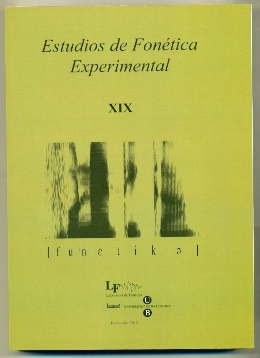Signs of trill in Modern Greek? Acoustic description of the Greek rhotic sound in coda position
Keywords:
rhotics, acoustic variability, coda position, Modern GreekAbstract
Cross-linguistically, rhotics show significant phonetic variability (Lindau 1985, Ladefoged and Maddieson 1996). In the Greek literature, Modern Greek has only one rhotic sound which is typically described as an alveolar tap [ɾ], not only in intervocalic position but also in clusters (Arvaniti 1999, 2001; Nicolaidis 2001, Baltazani 2005). The main purpose of this article is to characterize acoustically the Greek rhotic sound in coda position. The phonetic characteristics of the Greek rhotic sound were examined in a corpus comprising of 600 tokens (4 native speakers of Modern Greek x 3 repetitions x 50 words). Our results indicate that the predominant acoustic manifestation of the rhotic in coda is a tap, while other realizations of the Greek rhotic are also possible, such as approximant, presenting frication or trill.
Cross-linguistically, rhotics show significant phonetic variability (Lindau 1985, Ladefoged and Maddieson 1996). In the Greek literature, Modern Greek has only one rhotic sound which is typically described as an alveolar tap [ɾ], not only in intervocalic position but also in clusters (Arvaniti 1999, 2001; Nicolaidis 2001, Baltazani 2005). The main purpose of this article is to characterize acoustically the Greek rhotic sound in coda position. The phonetic characteristics of the Greek rhotic sound were examined in a corpus comprising of 600 tokens (4 native speakers of Modern Greek x 3 repetitions x 50 words). Our results indicate that the predominant acoustic manifestation of the rhotic in coda is a tap, while other realizations of the Greek rhotic are also possible, such as approximant, presenting frication or trill.
References
ARVANITI, A. (2007): «Greek Phonetics: The State of the Art», Journal of Greek Linguistics, 8, pp. 97–208.
ARVANITI, A. (2001): «Comparing the Phonetics of Single and Geminate Consonants in Cypriot and Standard Greek», Proceedings of the Fourth International Conference on Greek Linguistics, Tesalónica, University Studio Press, pp. 37–44.
ARVANITI, A. (1999): «Effects of speaking rate on the timing of single and geminate sonorants», Proceedings of the XIVth International Congress of Phonetic Sciences, vol. 1, pp. 599-602.
BALTAZANI, M. (2005): «Phonetic Variability of the Greek Rhotic Sound», poster presentado en Phonetics and Phonology in Iberia (PaPI) 2005, Barcelona.
BLECUA FALGUERAS, B. (2001): Las vibrantes del español: manifestaciones acústicas y procesos fonéticos, tesis doctoral, Universitat Autònoma de Barcelona, www.tdcat.cesca.es/TDCat-111102-110913, ISBN: B.24.695-2002//84-699-8068-8.
BLECUA FALGUERAS, B. (1999): «Características acústicas de la vibrante múltiple del español en habla espontánea», Actas del I Congreso de Fonética Experimental, Tarragona, 22-24 de febrero de 1999, pp. 119-126.
HALL, N. (2006): «Cross-Linguistic Patterns of Vowel Intrusion», Phonology, 23, pp. 387–429.
LADEFOGED, P. e I. MADDIESON (1996): The Sounds of the World’s Languages, Oxford, Blackwell.
LINDAU, M. (1985): «The story of /r/», en Fromkin, V. A. (ed.): Phonetic Linguistics: Essays in Honor of Peter Ladefoged, Nueva York, Academic Press, pp.157-168.
MARTÍNEZ CELDRÁN, E. y Α.Μ. FERNÁNDEZ PLANAS (2007): Manual de fonética española, Barcelona, Ariel.
NICOLAIDIS, K. (2001): «An Electropalatographic Study of Greek Spontaneous Speech», Journal of the International Phonetic Association, 31,1, pp. 67–85.
Downloads
Published
How to Cite
Issue
Section
License

This work is licensed under a Creative Commons Attribution-NonCommercial-NoDerivatives 4.0 International License.
All articles published online by Estudios de Fonética Experimental are licensed under Creative Commons Attribution-NonCommercial-NoDerivs 4.0 International (CC BY-NC-ND 4.0 DEED), unless otherwise noted. Estudios de Fonética Experimental is an open access journal. Estudios de Fonética Experimental is hosted by RCUB (Revistes Científiques de la Universitat de Barcelona), powered by Open Journal Systems (OJS) software. The copyright is not transferred to the journal: authors hold the copyright and publishing rights without restrictions. The author is free to use and distribute pre and post-prints versions of his/her article. However, preprint versions are regarded as a work-in-progress version used as internal communication with the authors, and we prefer to share postprint versions.




